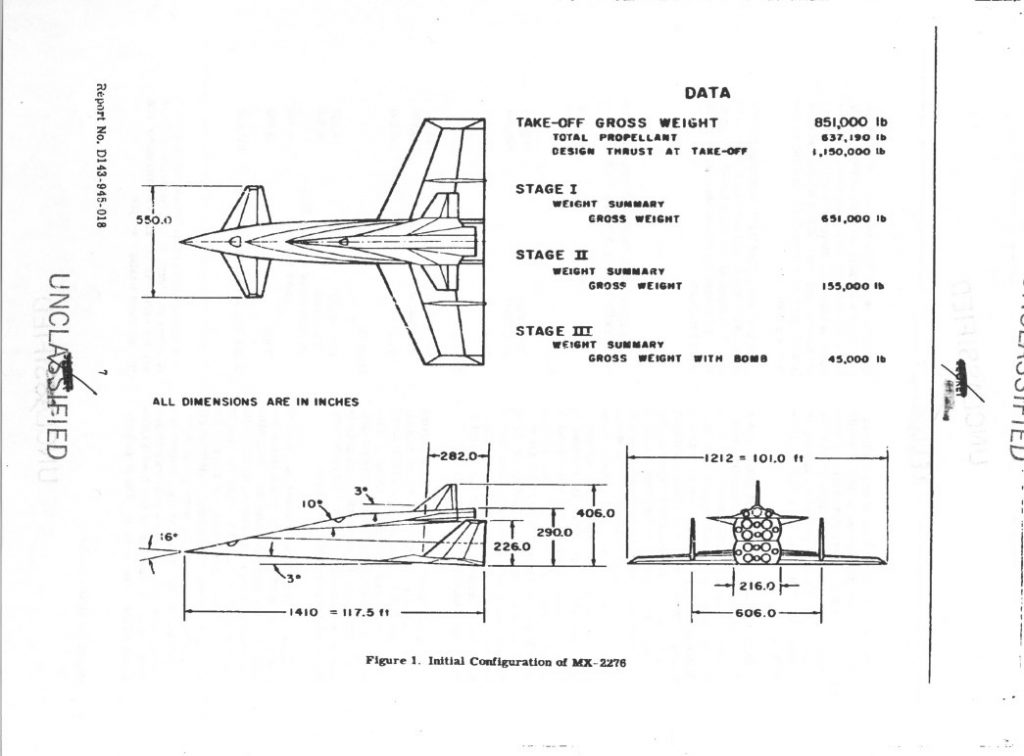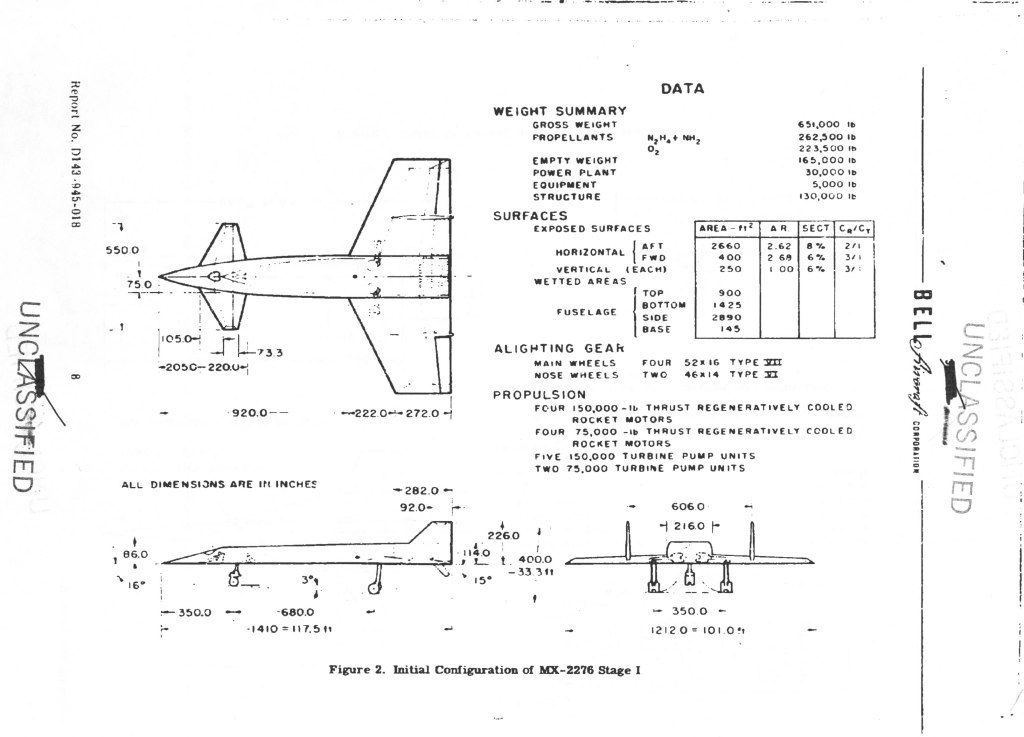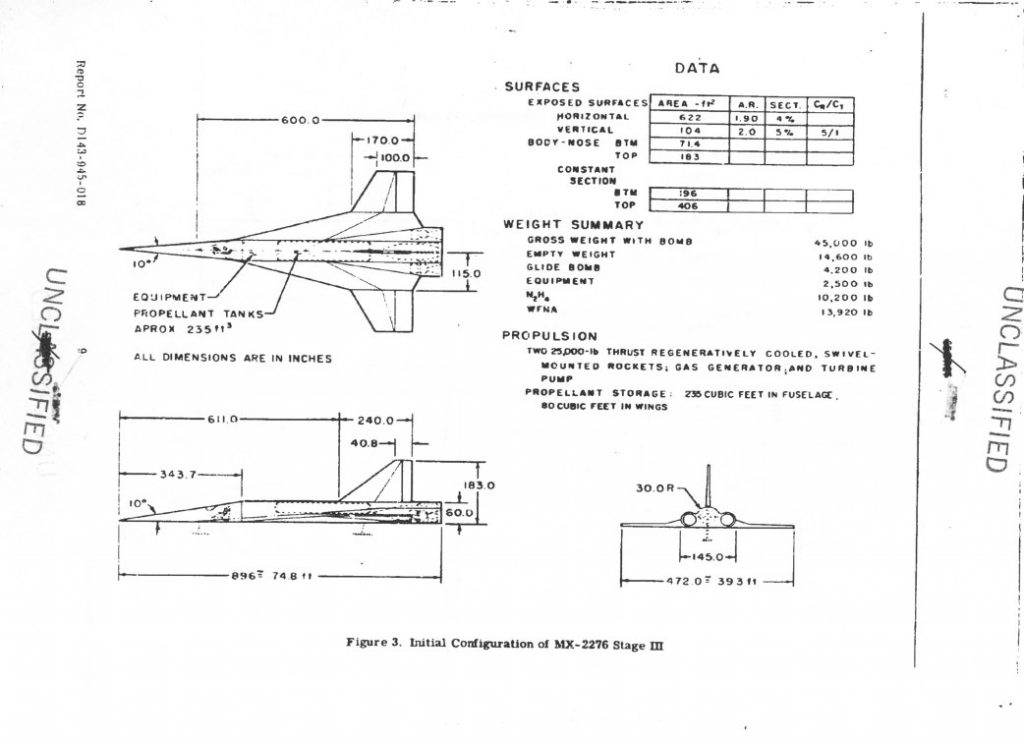Before the Convair Atlas ICBM proved that it was possible for a rocket to reach out across the world and deposit some canned sunlight reliably close to commie targets, it was understood that the only way to accomplish the task was with pilots and bombardiers. But by the mid 1950’s the idea of subsonic manned bombers sneaking into the heart of the Soviet Union without getting swatted was starting to seem nonsensical. So Bell Aircraft, under the direction of former V-2 program director Walter Dornberger, dreamed up the MX-2276: a three-stage manned rocket bomber. Looking akin to an evolved Sanger Antipodal Bomber, the MX-2276 used two manned and winged stages, with an unmanned expendable stage in between. The final stage would carry a single gliding nuclear warhead deep into the USSR, using the human crew to attain some measure of accuracy.
But then the Atlas came along and ruined all that.
The idea persisted, however, turning first into the Bomber Missile (BoMi) then the Rocket Bomber (RoBo) then Dyna Soar. With each step it became less fantastical, and also less of a dedicated weapon system; by the end of the Dyna Soar, it was a one-man experimental re-entry vehicle launched by a fully expendable Titan IIIC. Since then the idea of a “rocket bomber” has popped up from time to time, but never with the level of seriousness displayed in the mid/late 1950’s. For more on the whole BoMi program, see Aerospace projects Review issues V2N2, V2N3 and V2N4. APR issue V3N4 gives a pretty complete rundown of the final Model 2050E Dyna Soar.



